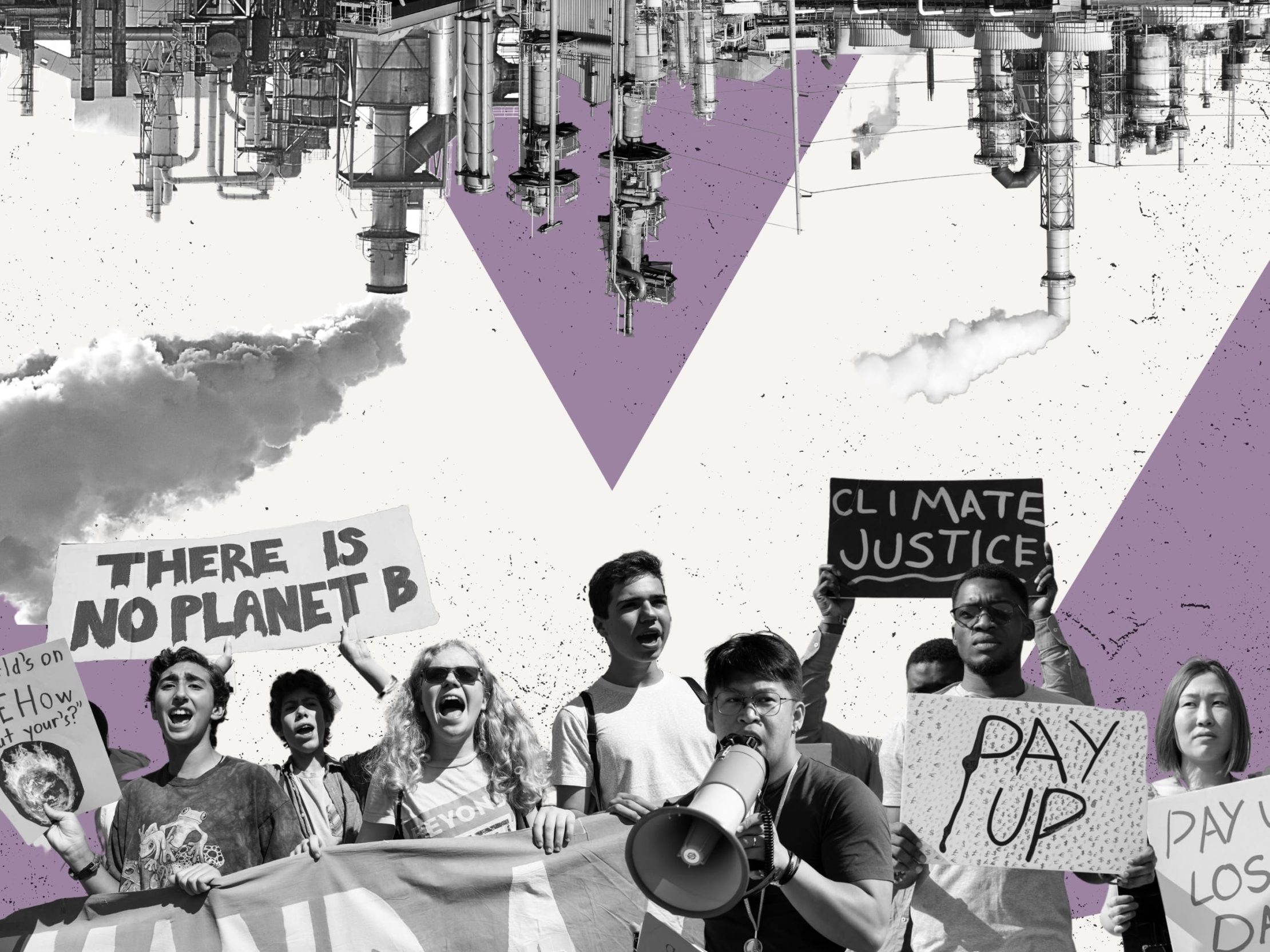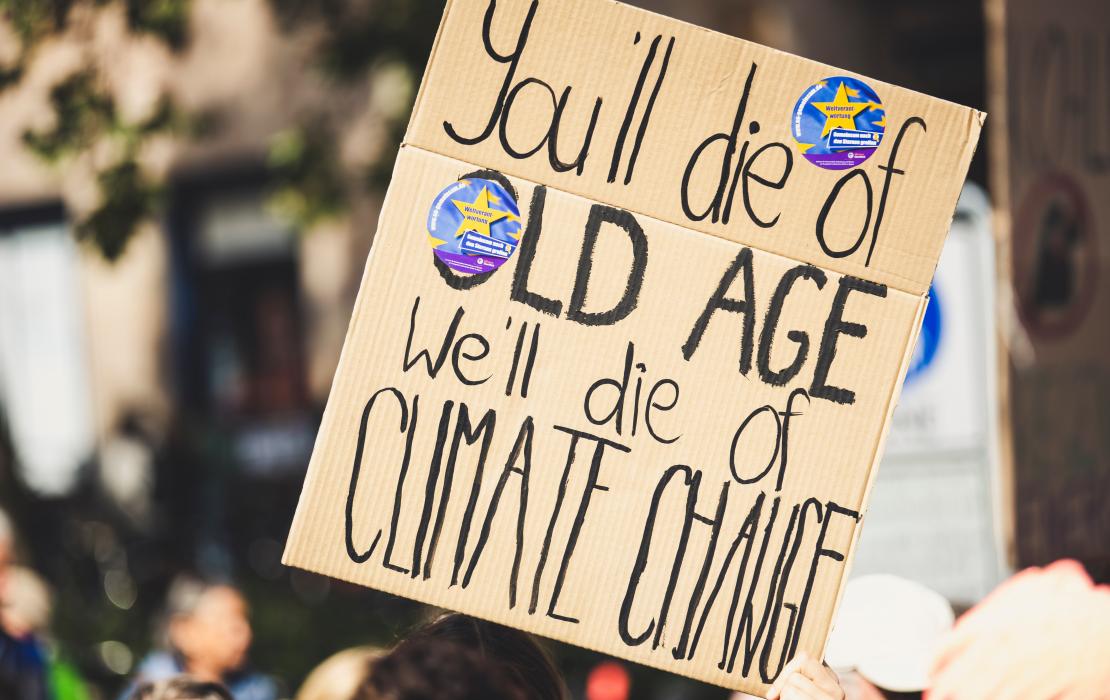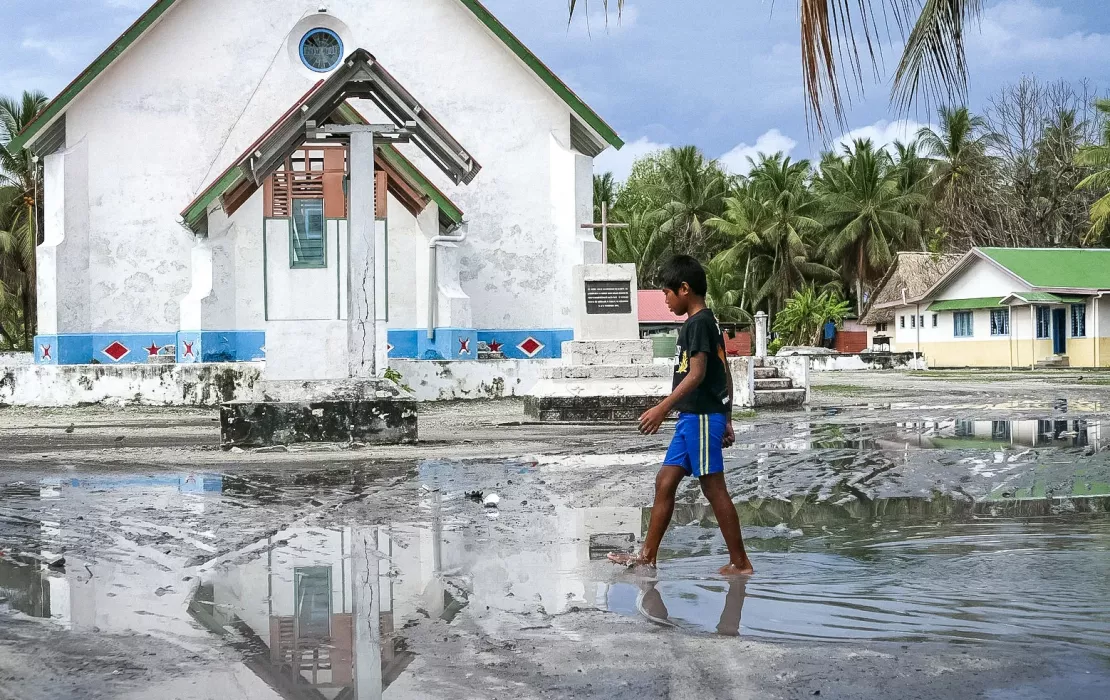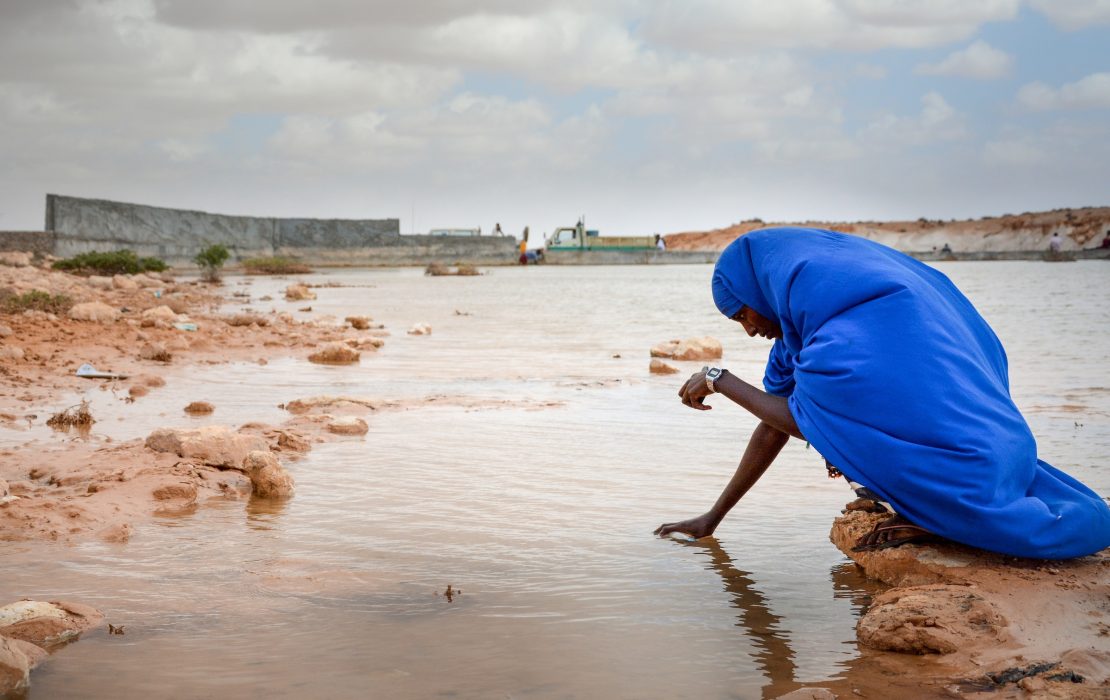
What is climate justice and why does it matter?
Climate justice means putting equity and human rights at the core of decision-making and action on climate change.
The concept has been widely used to refer to the unequal historical responsibility that countries and communities bear in relation to the climate crisis. It suggests that the countries, industries, businesses, and people that have become wealthy from emitting large amounts of greenhouse gases have a responsibility to help those affected by climate change, particularly the most vulnerable countries and communities, who often are the ones that have contributed the least to the crisis.
There are many facets to climate justice. Below, we provide an overview of a few of them.
- Structural inequalities: Even within the same country, the impacts of climate change may be felt unevenly due to structural inequalities based on race, ethnicity, gender, and socioeconomic status. Women are more severely affected by climate change impacts, because they have access to fewer resources to adapt and cope with abrupt changes. People with disabilities are at increased risk of the adverse impacts of climate change, including threats to their health, food security, access to water energy, and sanitation, and livelihoods, particularly in developing countries. Indigenous Peoples, who protect 80 percent of the world’s biodiversity, are facing increasing threats and risks to their lives, livelihoods, and traditional knowledge.
- Socioeconomic inequalities: The impacts of climate change and the resources needed to address climate change impacts are distributed unequally around the world. Low-income countries, and vulnerable populations within those countries, are more susceptible to climate-induced loss and damage. Globally, the 10 percent of households with the highest per capita emissions contribute 34–45 percent of global household greenhouse gas emissions, while the bottom 50 percent contribute 13–15 percent.
- Intergenerational inequity: Children and young people today have not contributed to the climate crisis in a significant way but will bear the full force of climate change impacts as they advance through life. Because their human rights are threatened by the decisions of previous generations, their rights must be centred in all climate decision-making and action.
Why is climate justice important?
Climate change is a human rights issue. All people should have the agency to live life with dignity. However, the climate crisis is causing loss of lives, livelihoods, language, and culture, putting many at risk of food and water shortages, and triggering displacement and conflict.
The climate crisis impedes the right to good health as well. Rising temperatures, increased frequency of extreme weather events, polluted air and water contribute to significant health impacts, including heat stress, disease outbreaks, malnutrition, and trauma from having lived through disasters.
The impacts are more severe for vulnerable populations who have limited means to adapt to climate change impacts. Between 2010 and 2020, human mortality from floods, droughts, and storms was 15 times higher in highly vulnerable regions, compared to regions with very low vulnerability.
The climate crisis also has impacts on a country’s education system. When temperatures are too high or extreme weather events hit, for example, it can damage infrastructure and damage educational institutions, threaten the ability of parents to send their children to school, impacting the futures of young generations.
Climate justice is also an important aspect of just transition toward a sustainable future. Local communities, especially informal workers and other vulnerable and marginalized populations can be harmed in this transition if not protected and consulted. For example, there are increasing concerns around human rights violations related to mining for minerals needed to produce batteries for electric vehicles.
Currently, those who have least contributed to the climate crisis are being disproportionately affected by it. Climate justice suggests that the responsibilities in addressing climate change should be divided according to who is contributing most to the problem, while addressing systemic, socioeconomic, and intergenerational inequalities.

Photo credit: Markus Spiske/Pexels

Photo credit: Tuvalu Ministry of Justice/Facebook
What are the obstacles to achieving climate justice?
There are many challenges that countries and communities face on the road to achieving climate justice.
One obstacle is lack of transparency and inclusion in climate negotiations and plans. The voices of women, youth, Indigenous Peoples, and marginalized groups are integral to the future of our planet, and it is essential that they have access to platforms where they can participate in decision-making and implementation of policies and plans. However, underrepresented voices may also be victims of ‘tokenism,’ meaning that they are sometimes included with the intention of appearing inclusive but having only marginal roles or lacking empowerment.
Another obstacle is lack of access to education and resources on the environment, climate change, and human rights. This prevents people, often those most affected by the problem, from making the necessary connections and participating in the relevant policy discussions. Language barriers can often pose a challenge as well, especially for local communities and Indigenous Peoples participating in decision-making and negotiations.
In many countries, environmental activists and defenders face dangerous consequences for demanding environmental rights and justice. They may be jailed, threatened, or subjected to violence, forced disappearances, or even murder. This creates an unsafe environment for defenders to come forward and demand justice.
At the global level, more vulnerable countries have been advocating for more financial and technical support from rich countries for decades. While there has been some recent progress on potential finance for loss and damage, many estimates have concluded that rich countries have yet to reach the $100 billion annual climate finance political commitment, which was agreed in 2009 and expected to start in 2020. Countries are already working on coming up with a new negotiated annual goal as the existing target is not adequate or science-based and more finance is needed annually to address increasing global warming.
How is UNDP supporting countries to tackle climate justice issues?
UNDP has a long history of working with countries on rule of law, human rights and access to justice, including issues of environmental and climate justice, such as constitutional reform, the right to a clean, healthy and sustainable environment, and other environment-related human rights. UNDP has also supported the development and implementation of environmental and climate change laws and policies; and the access to information, public participation, and justice on environmental matters.
More and more countries are recognizing human rights in their Nationally Determined Contributions (NDCs). Through the Climate Promise initiative, UNDP works to make the revision of the NDCs under the Paris Agreement a more inclusive and rights-based process. This includes guidance to work with youth in a meaningful way and advance gender equality in climate action plans. UNDP is working to also ensure Indigenous Peoples are also included in the NDC process.
Many countries are taking action to bring justice to the centre of environmental and climate issues.
Here are some examples of progress around the world:
Viet Nam is working with the business sector to implement the UN Guiding Principles on Business and Human Rights.
In Latin America and the Caribbean, Panama and Argentina are working on access to information and justice and public participation in the public and policy dialogue on the environment, including their engagement with the Escazú Agreement –the world’s first binding treaty to address environmental human rights– which recently entered into force.
UNDP in Lebanon is strengthening the capacity of the Ministry of Environment on environmental policy development in terms of laws, regulations and other policy mechanisms.
Türkiye is providing training to young lawyers on climate justice to educate them on how to protect the rights of individuals and communities that are threatened by climate change and how to induce governments and companies to adopt more climate-friendly policies and practices.

What is the future of climate justice?
The voices and demands of vulnerable communities and groups are being increasingly acknowledged on the international agenda. Activists are taking to the streets around the world to demand change. Young climate leaders have been a powerful force in driving attention to issues of intergenerational climate justice.
In 2022, the UN General Assembly declared that access to a clean, healthy, and sustainable environment is a universal human right. The declaration recognizes that the impact of climate change, the unsustainable management and use of natural resources, the pollution of air, land and water, the unsound management of chemicals and waste, and the resulting loss in biodiversity interfere with the effective enjoyment of all human rights. It is expected to be a catalyst for action and to empower ordinary people to hold their governments accountable.
Acknowledging the call of children and young people around the world, the UN Committee on the Rights of the Child emphasized children’s right to a healthy environment with a special focus on climate change. Over 16,000 children were consulted in the drafting process, and the final document clarified the obligations of countries and the business sector.
Small Island Developing States have also been at the forefront of climate justice advocacy in negotiations. In March 2023, the UN General Assembly adopted a historical resolution requesting the International Court of Justice to provide an advisory opinion on countries’ obligations towards climate change. Stemming from an idea of students in the Pacific, the resolution was put forward by the Pacific Island state of Vanuatu, and supported by a core group of 17 countries. It asks the Court to give an opinion on the obligations of countries under international law to ensure the protection of the “planet’s climate system”. The resolution also requests an opinion on the legal consequences of causing significant harm to the climate system, in particular for small island states and people of present and future generations.
Climate litigation more broadly is also on the rise. Citizens, youth, and communities are increasingly taking governments and companies to court to address the climate and environment-related harms and injustices they are facing.
At COP27, an historic decision for new funding arrangements, including a new fund, was established to help particularly vulnerable countries and communities respond to climate-induced loss and damage. This will help to provide new and additional finance specifically for addressing loss and damage for those most impacted.
It is clear the push for climate justice will only gain momentum as time goes on and the impacts of climate change become more pronounced.


